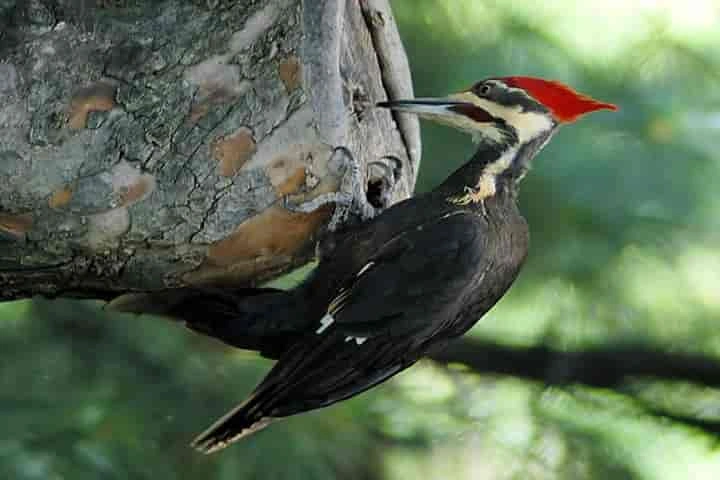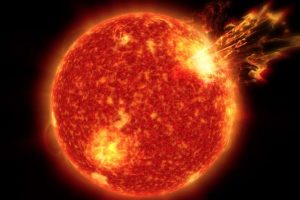The sight of a woodpecker hammering away on a tree sounding like a heavy machine gun firing rapidly is incredible. It is intriguing too since it makes one wonder as to how the bird is able to withstand the impact of this constant forceful pecking on a hard surface which is essentially done for finding food, making nests and marking territories and attracting mates.
Details of a new study reported in sciencealert.com raises doubt about the biomechanics of this bird that it steers clear of any damage to its brain through adaptations made for absorbing the shock. Instead, the research states that perhaps the size of the brain is so small that it is not affected by the impact of the chiselling.
Talking about the study, Sam Van Wassenbergh, said: “By analyzing high-speed videos of three species of woodpeckers, we found that woodpeckers do not absorb the shock of the impact with the tree.” Van Wassenbergh is a biomechanics researcher from Belgium’s University of Antwerp.
To understand the impact of the pecking one must know the science behind it.
Moving their head 20 times a second, the bird while pecking a tree, can experience forces of up to 1400 g. Juxtapose this with the paltry 90 to 100 g that can lead to concussion in human beings and one will appreciate what the woodpeckers undergo and how it must be affecting their skull.
In the past, studies suggested that the body of the bird had evolved changes to enable the brain to absorb the impact. These included spongy, shock-absorbing bones and neck muscles.
These special attributes allowing absorption of the blow also helped to decrease the forces when the bird’s head accelerates and decelerates swiftly.
This brings to the vital point if woodpeckers actually need these safety devices since the small size of their brains and tight skulls do not leave any scope for damage.
For this research Van Wassenbergh used more than 100 high-speed videos of six woodpeckers to study and measure the deceleration of their eyes as their beaks met the wood.
The six birds belonged to three species of woodpeckers — Dryocopus martius, Dryocopus pileatus, and Dendrocopos major.
The reason why the eyes were studied was because the eyeball closely reflects what is going on in the soft brains located inside the skull, allowing the scientists to work out the physics of a decelerating skull.
On analysing the videos, it was realised that the whole head of the bird moves as one with little difference between the eye and the beak. “Their heads basically function as stiff, solid hammers during pecking,” Van Wassenbergh remarked.
The scientists constructed biomechanical models on the basis of the data collected during the frame-by-frame analysis of the videos. This revealed that there wasn’t much shock-absorption between the tip of the beak and the skull's contents.
Thus, the bone structures which were special instead of absorbing energy from every individual blow did help in resisting fracturing. All this results in making the bird’s work efficient and forceful.
Explaining this the researchers said: "If the beak absorbed much of its own impact the unfortunate bird would have to pound even harder.”
The work done by Van Wassenbergh and his team on the intracranial pressure of the woodpecker's skull recommends that the small brains of the bird are not affected in any serious way by the constant shoving and pushing. That means, the birds don’t have to care about safety features.
Elucidating on this point Van Wassenbergh said: "The absence of shock absorption does not mean their brains are in danger during the seemingly violent impacts. Even the strongest shocks from the over 100 pecks that were analyzed should still be safe for the woodpeckers' brains as our calculations showed brain loadings that are lower than that of humans suffering a concussion."
The results of this research throw light on why these birds did not develop to become bigger than 22 inches in length. The reason being with more muscles and bigger size would have facilitated in locating more food but their brains which would have become naturally bigger would not have been able to absorb the pressure.
Details of this research was published in Current Biology.




















